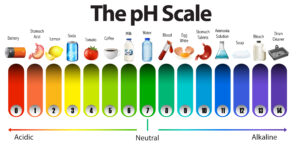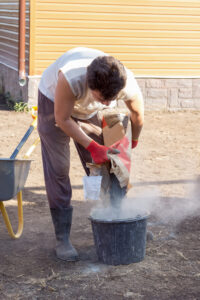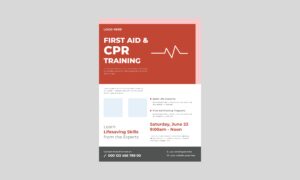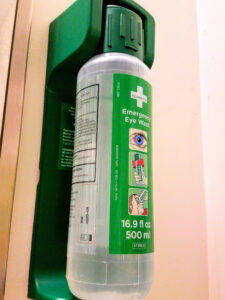Protect your eyes from alkalis!
Nov 03, 2022

Why are concrete/cement/plaster products in the eye such an emergency?
Most cement, lime, mortar, concrete, and plaster products are hazardous substances that contain strong alkalis.

As seen in the image above, alkalis are on the opposite end of the PH scale from acids, however, can be equally as dangerous, being extremely destructive to your eyes. The way you handle the first seconds, minutes, and hours after you get the dry powder or wet mix in your eyes, will determine the outcome.
Alkalis may start their damaging work in your eye without much pain or symptoms, but over time the damage gets worse. So beware, follow the first aid steps below even if you don’t feel pain.
Don’t become one of the statistics: in 2019 – 2020 there were 197 injury claims resulting from chemical or other substances to the eye.

What is the First Aid treatment if I get concrete/cement products in my eye?
Every second counts! Run to the closest tap, eye wash station or water bottle and start flushing your eye. You are aiming to dilute the alkali to lessen the damage.
Wash your face and hands, you don’t want to get more cement product in your eyes. Flush your eye with a steady stream of running water. Let it pour into your eye while lifting both eyelids to rinse out all the cement granules underneath. Do not reuse the water and do not let contaminated water run into the unaffected eye.
- Do not rub your eye.
- Remove contact lenses as soon as possible.
- Continue flushing while you or someone else calls 000, or the Poisons Information Centre on 131 126 for instructions. Have your concrete/cement/plaster Safety Data Sheet handy, as the medical services will base their instructions on the product information in the SDS (for instance, the higher the pH of the product, the longer you need to flush the eye).
- You must see a doctor urgently when an alkali has entered your eye. Continue flushing the eye en route to the medical centre. The doctor will continue flushing your eye until its pH is back to normal. Take the SDS along with you.
What will happen if I do not flush my eye, or stop too early?
If you do not flush your eye, or stop before you are told to do so, you may suffer from permanent eye damage, dry eyes, vision loss and more.
How can I protect my eyes?
- Training: everyone on-site should know about the risk, prevention, and First Aid treatment of cement/concrete/plaster products in the eye.

- Do not touch your eyes when working with chemicals
- Wear strong gloves whilst handling material. Remove gloves and wash hands prior to eating
- Nitrile or chemical-resistant gloves are best
- Wear sealed safety goggles to protect against dry cement/concrete/plaster dust, for instance when mixing, and when the risk of wet splashing is high.
- Wear safety glasses when the risk of wet splashing is low.
- Have an eye rinse station at hand and know the location of the nearest tap.

- Keep your product SDS, available from your product suppliers, on-site. For more information on SDS, click on the following resources:
SafeWork Australia Safety Data Sheets
WorkSafe Victoria Safety Data Sheets
You can create a Hazardous Substances Register using the template available in your HazardCo hub. You can attach the SDS’s to the register and share it with your team.
If you have an incident where someone gets cement/concrete in their eye, remember to report this as an incident in the HazardCo App. This will automatically be added to your incident register in the HazardCo Hub, and the Advisory team will be in touch with you to discuss next steps if it is deemed to be notifiable.
For questions or support, contact the friendly advisory team at HazardCo on 1800 954 702 or info@hazardco.com.









